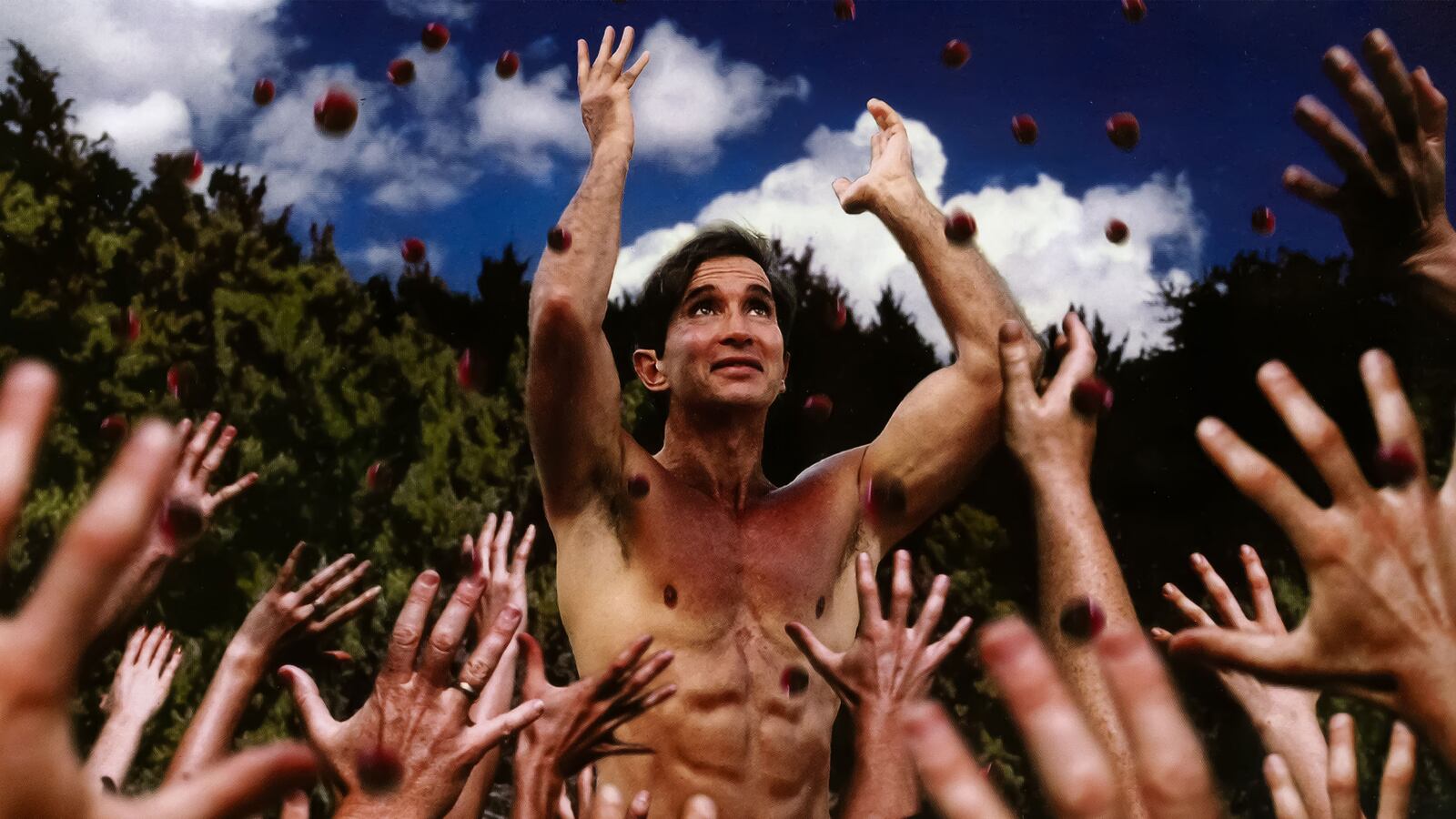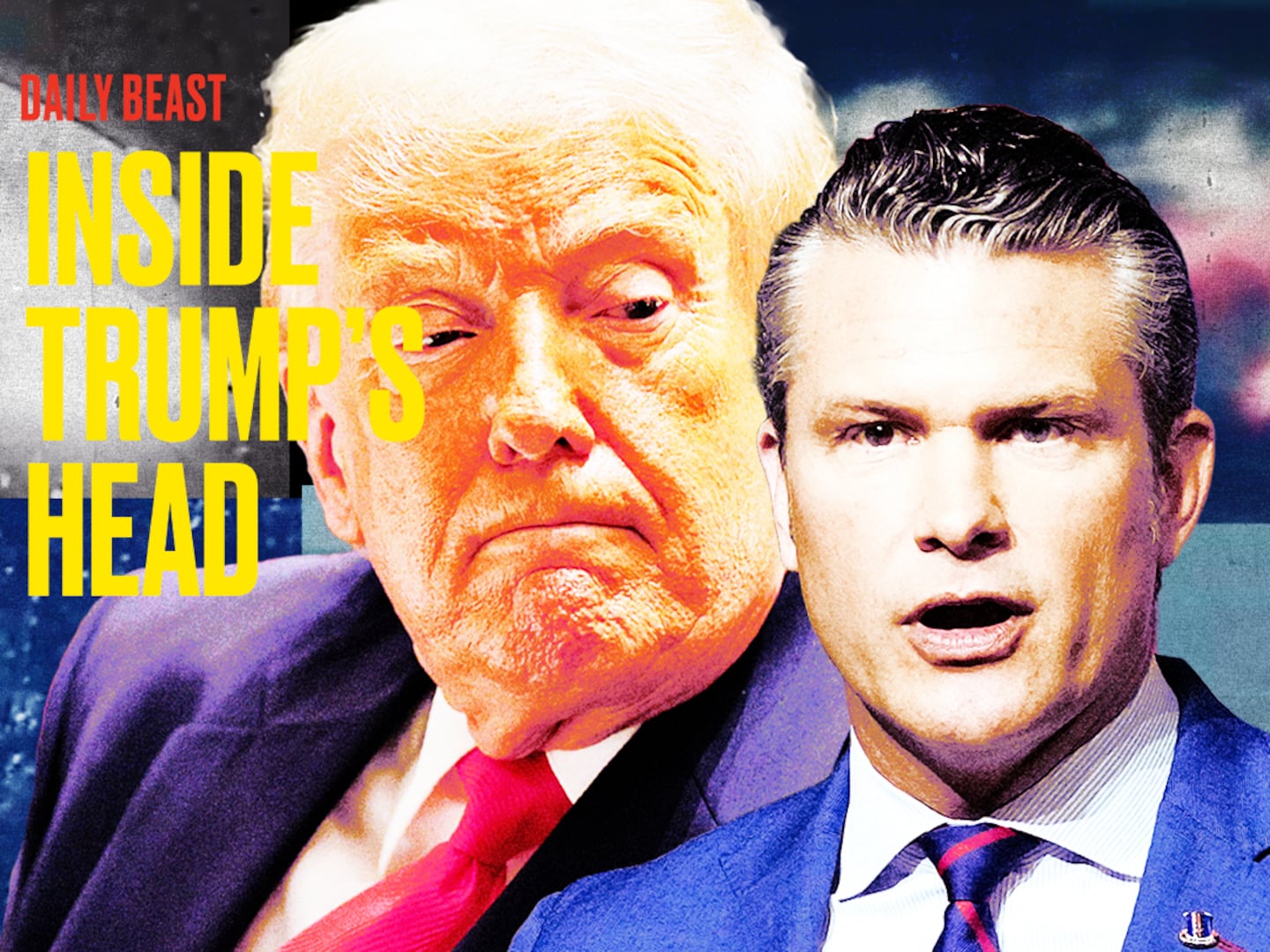True-crime docuseries rule the non-fiction landscape—and the more shocking and scandalous, the better. Thus, it’s no surprise that, whether in theaters or on streaming, cults are an endlessly fascinating topic of inquiry, as evidenced by (to name just a few), Wild Wild Country, The Vow (and its second part), Waco: American Apocalypse, Heaven’s Gate: The Cult of Cults, The Way Down: God, Greed and the Cult of Gwen Shamblin, Helter Skelter, Keep Sweet: Pray and Obey, Me and the Cult Leader, AUM: The Cult at the End of the World, Deadly Cults, Shiny Happy People: Duggar Family Secrets, Our Father, Pray, Obey, Kill, The Devil You Know, Blessed Child, Unveiled: Surviving La Luz del Mundo, Children of the Cult, Bikram: Yogi, Guru, Predator, Crusaders, and Sex, Lies and the College Cult.
Simply put, few subjects have been more thoroughly covered over the past decade than insular, exploitative, insane groups and their self-anointed messiahs.
How to Become a Cult Leader recognizes this and consequently takes a tongue-in-cheek approach to some of history’s most infamous manipulative madmen. A six-part Netflix series (July 28) narrated by Peter Dinklage, it’s a CliffsNotes guide to the teachings, techniques, and terrible scandals that define cults, offering primers on six noteworthy gurus and the methods they employed to attract followers, acquire power, and commit violent acts—both against themselves and those they decried as heretics. Designed as a small-screen instruction manual, it provides only cursory snapshots of its chosen areas of interest. Still, as a general overview of such outfits’ bedrock traits and strategies, it certainly knows about which it speaks.
With a lighthearted tone that makes its half-hour installments easily digestible and yet never undercuts its seriousness, How to Become a Cult Leader examines its tales through archival material, talking-head interviews with experts, authors, and survivors, and animated sequences that dramatize some of its key passages. It also divides up its analysis via text cards—depicted as chapter-heading pages from its figurative how-to tome—that lay out the “tactics” that are central to any cult leader’s success. Couple those devices with Dinklage narration that treads an amusing line between gravity and sarcasm, and the overall package is at once insightful and playful, if not quite as comprehensive as a feature-length documentary (such as many of the aforementioned titles) might be on a given prophet of doom.
Considering its structure, How to Become a Cult Leader leaves a few notorious names out of its survey, including La Luz del Mundo’s Eusebio Joaquin (and his two sons), hot yoga founder Bikram Choudhury, and Scientology’s L. Ron Hubbard (and his successor David Miscavige). Other notable cultists such as David Koresh, Keith Raniere, and Bhagwan Shree Rajneesh are only cursorily referenced. Nonetheless, it doesn’t skimp on the heavy hitters, beginning with Charles Manson, whose story opens the docuseries and helps lay out the best ways to create a cult’s foundation. Those include embracing your holy calling, establishing a unique dogma, and finding your target demographic, which in Manson’s case was young counter-culture kids who, in the late ’60s, were searching for stability, guidance, and answers to the burning questions of their tumultuous era.

Manson’s saga has by now been rehashed countless times, making How to Become a Cult Leader’s recap little more than a sketch. Still, it functions as a decent jumping-off point for the series’ subsequent looks at additional self-proclaimed saviors. Jim Jones’ marriage of traditional Pentecostalism and New Age spirituality with his People’s Temple—culminating in his Kool-Aid-enabled 1978 mass suicide in Guyana—serves as a handy briefing on how cultists grow their flocks, wow would-be disciples, stoke apocalyptic fears, and build isolationist enclaves fit for control. Meanwhile, the episode on Heaven’s Gate’s Marshall Applewhite, who convinced his flock that they were aliens destined to avoid a rapture-like End Times by beaming up to a UFO trailing the Hale-Bopp comet, offers lessons in silencing dangerous doubts, demanding perfection from acolytes, and flipping the script when prophecies don’t go as planned.
That these rules and policies work is proven by former Heaven’s Gate member Stewart, who says about his fellow “travelers,” “I believe they’re on spacecrafts in the Next Level environment, in deep space.” How to Become a Cult Leader discusses at length the sorts of individuals who might be duped by these tricks, and at its end, People’s Temple survivor Yulanda Williams states that if viewers think they could never be ensnared in a cult’s trap, “you’re the kind of person that they’re waiting for.” That’s an ominous soundbite on which to conclude. Yet as with so many like-minded affairs, the one thing missing from the docuseries is recognition of the obvious fact that cults prey upon people who are not only damaged, lost, and susceptible to religious ideas and power structures, but also so gullible that they’ll swallow the most absurd, far-fetched fantasies and lies imaginable. Not everyone would fall for Jones or Applewhite’s nonsense, and suggesting otherwise undercuts the proceedings’ credibility.

Financial and sexual exploitation are also a significant component of How to Become a Cult Leader, including in its third episode about the (relatively lesser known) Jaimie Gomez, a wannabe dancer and actor who persuaded hundreds to wait on him hand and foot, to fork over all their money, and to cut themselves off from family and friends in order to reach enlightenment. Compared to the others featured in the docuseries, he’s somewhat small-time, if a typical megalomaniacal narcissist following a familiar playbook. On the other end of the spectrum are Shoko Asahara, whose Aum Shinrikyo cult was a mainstream cultural force before it carried out the 1995 terrorist attack on the Tokyo subways, and Sun Myung Moon’s Unification Church, whose mass-wedding stunts and canny political maneuvers have allowed it to outlive its founder’s death.
There isn’t anything profound to be gleaned from How to Become a Cult Leader that hasn’t been covered before, and in greater depth. However, as a snack-sized synopsis of cults and the maneuvers and machinations that allow them to flourish, it’s a reasonably informative and—thanks to Dinklage’s amusingly droll participation—entertaining compendium.







